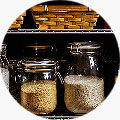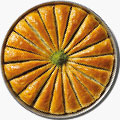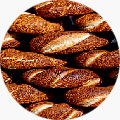Rakı as a drink has been in the Turkish consciousness for over 500 years. Distilled using grapes, raisins and aniseed, Rakı was first referenced in literature in 1510. It was then widely distilled throughout the Ottoman Empire and in 1937 it became known as Yeni Rakı meaning “New Rakı” to symbolize the coming of the new post-war era.
Rakı is a typically Anatolian product with a cultural legacy that spreads throughout Turkey and beyond. There is no clear answer to the question of who first made Rakı. Yeni Rakı as we know it today is the product of an evolution that has developed over centuries.
The rich heritage of Yeni Rakı matches its rich flavour. With its tones of aniseed and distilled grapes, it is layered and dramatic. This flavour is created through a highly crafted distillation process. It is a skilled and timely process with the flavour and texture developing with each drop.
Grapes are removed from their stems and pressed to create suma. The suma is then twice distilled and mixed with aniseed on the second distillation process in traditional copper stills. The finished Yeni Rakı is then aged oak barrels for a minimum of 30 days to mellow and develop its final distinctive taste.
Serving and drinking
Toasting with rakı, in typical rakı glasses
In Turkey, rakı is the national drink and is traditionally consumed either straight (sek, from the French "sec" meaning neat or dry), with chilled water on the side or partly mixed with chilled water, according to personal preference. Ice cubes are sometimes added. Dilution with water causes rakı to turn a milky-white color, similar to the louche of absinthe. This phenomenon has resulted in the drink being popularly referred to aslan sütü ("lion's milk").Since aslan ("lion") is a Turkish colloquial metaphor for a strong, courageous man, this gives the term a meaning close to "the milk for the strong."
Rakı is commonly consumed alongside meze, a selection of hot and cold appetizers, as well as at a rakı sofrası ("rakı table"), either before a full dinner or instead of it. It is especially popular with seafood, together with fresh arugula, beyaz peynir and melon. It is an equally popular complement to various red meat dishes like kebabs, where it is sometimes served with a glass of şalgam.
The founder and first President of the Republic of Turkey, Mustafa Kemal Atatürk, was very fond of rakı, and his late-night rakı sofrası sessions were his favorite place to debate issues with his closest friends and advisors
Events
Anise-flovored Rakı, has been celebrated as a festival in Adana and Northern Cyprus since 2010. World Rakı Festival in Adana, emerged from a hundred-year tradition of enjoying Adana kebab, with liver, şalgam and rakı. The event turned into a nationwide popular street festival, street musicians playing drums and zurna, entertain visitors all night long at the second Saturday night of every December.[10] North Cyprus Rakı Festival is a week long festival taking place in Girne, Lefkoşa and Gazi Magosa.
| Volume |
700 ml |
| Storage Instructions |
Best stored in a cool dark place. |
| Serving Recommendation |
Serve with ice and water |
| Country of origin |
tr |
| Alcohol Content |
45 % Vol |
| Brand |
Yeni |
| Manufacturer/Producer |
Yeni |
Drink Responsibly
UK Chief Medical Officers recommend adults do not regularly exceed:
Men 3-4 units a day
Women 2-3 units a day
drinkaware.co.uk
DrinkiQ.com
Important Information
The above details have been prepared to help you select suitable products. Products and their ingredients are liable to change.
You should always read the label before consuming or using the product and never rely solely on the information presented here.
This information is supplied for your personal use only. It may not be reproduced in any way without the prior consent of Turkıshop Ltd and due acknowledgement.












